Basal Cell Carcinoma
Overview of Basal Cell Carcinoma (BCC)
Basal Cell Carcinoma (BCC) is the most common form of skin cancer, responsible for the majority of skin cancer cases. It originates in the basal cells, located in the lowest part of the epidermis, the outermost layer of the skin. While Basal Cell Carcinoma is generally slow-growing and considered less aggressive than other skin cancers, it can still lead to significant local tissue damage if not treated promptly.
Basal Cell Carcinoma can appear in various forms on the skin, including red patches, pink growths, open sores, and shiny bumps. It is primarily caused by prolonged exposure to ultraviolet (UV) rays from the sun or tanning beds. Although BCC is rarely life-threatening when treated properly, early detection and treatment are essential to prevent complications.
Nearly three million people are diagnosed with BCC each year, with those who have lifestyles that expose them to high levels of UV rays being at higher risk. Although the average age of BCC patients is decreasing, it remains most common in individuals over 40. People with fair skin, blond or red hair, and blue, green, or grey eyes are more susceptible, and men are at a higher risk of developing BCC. Regular skin checks and protective measures against UV exposure are key to reducing the risk of BCC.
Protecting Against Basal Cell Carcinoma: Prevention and Early Detection
Regular skin examinations and protective strategies against UV exposure are crucial steps in reducing the risk of developing Basal Cell Carcinoma. Taking proactive measures can help ensure early detection and effective treatment, minimizing the potential for complications.
Examples of Basal Cell Carcinoma
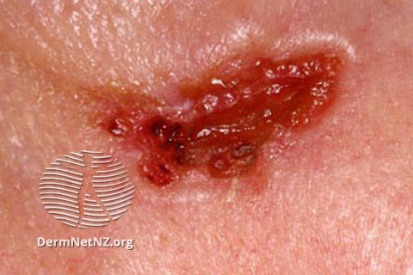
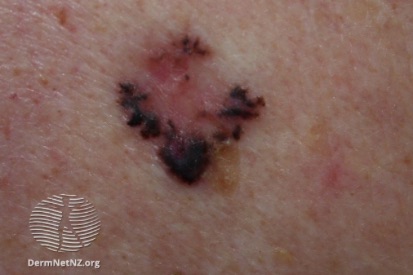
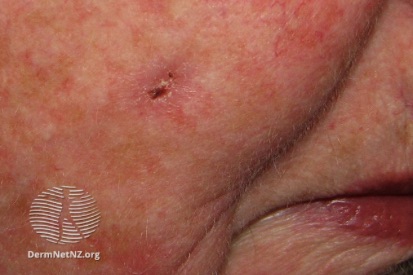
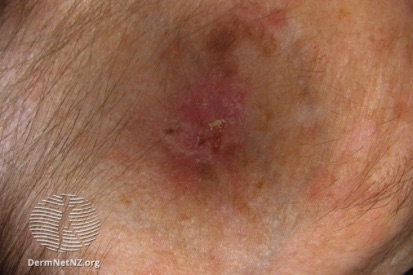
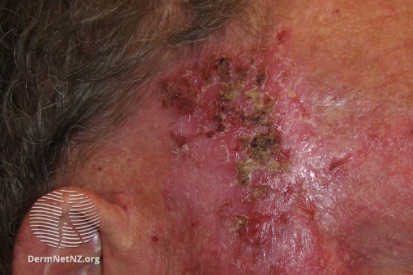
Symptoms of Basal Cell Carcinoma
- Basal cell carcinoma (BCC) often begins as persistent wounds or sores.
- BCC can appear as reddish areas on sun-exposed parts of the body such as the face, neck, arms, and legs.
- BCC might resemble scars, pink growths, or shiny bumps.
- In some cases, they bear a resemblance to moles, contributing to misidentification.
Causes of Basal Cell Carcinoma
- Basal cell carcinoma is caused by spending too much time in the sun.
- Getting sunburnt, especially as a child, increases the risk of BCC.
- Family history of skin cancer.
- A weakened immune system, and exposure to certain environmental toxins can also contribute.
How to Prevent Basal Cell Carcinoma
- Sunscreen is Your Shield: Regularly apply a broad-spectrum sunscreen with at least SPF 30 on all exposed skin, even on cloudy days. Reapply every two hours or more frequently if swimming or sweating.
- Cover Up: Wear protective clothing such as long-sleeved shirts, wide-brimmed hats, and sunglasses to minimize direct sun exposure.
- Avoid Peak Sun Hours: Limit outdoor activities during the sun's strongest hours, usually from 10 a.m. to 4 p.m. If possible, seek shade under trees or use an umbrella.
- Protective Gear for Outdoor Activities: If you're engaging in outdoor sports or activities, consider using sun-protective clothing and gear to create an extra barrier against UV rays.
- Regular Skin Checks: It's essential to schedule annual skin checks with your dermatologist. Early detection is critical to effective treatment plans.
Basal Cell Carcinoma: FAQs
Individuals with fair skin, a history of frequent sun exposure, or a family history of skin cancer are at higher risk.
Dermatologists diagnose BCC by examining the skin lesion. They may perform a biopsy to confirm the presence of cancerous cells.
Yes, Mohs surgery is an effective treatment option for Basal Cell Carcinoma (BCC). Mohs surgery is often recommended for BCCs that are large, have ill-defined borders, are located in areas where tissue preservation is crucial (such as the face), or have a higher risk of recurrence. It offers high cure rates, with minimal damage to the surrounding healthy tissue, making it an excellent choice for treating certain types of Basal Cell Carcinoma.
BCC can recur in the same area. Regular skin checks and follow-ups are crucial for early detection and prompt treatment if it reappears.
Continuing sun protection measures, regular self-examinations, and routine skin checks, or Total Body Skin Exams, with a dermatologist are key to preventing recurrence.
From Our QualDerm Family of Providers: Non-Melanoma Skin Cancers
How to Treat Basal Cell Carcinoma
- Mohs Micrographic Surgery: This specialized surgery is commonly used for skin cancers like Basal Cell Carcinoma, particularly in sensitive areas. Mohs surgery excels in preserving healthy tissue, boasting a high cure rate of around 98% for primary, non-recurrent cases.
- Excisional Surgery: In this procedure, a small margin of surrounding healthy tissue is removed to prevent the cancer from spreading.
- Electrodesiccation and Curettage: After numbing the area, the growth is scraped off and cauterized (burned) to eliminate remaining tumor cells and control bleeding. This method is not ideal for advanced cases or growths in sensitive areas.
- Topical Therapeutic Options: Certain creams or ointments can be considered for specific lesions. Your dermatologist will discuss these options based on the characteristics of the Basal Cell Carcinoma.
Featured Blogs
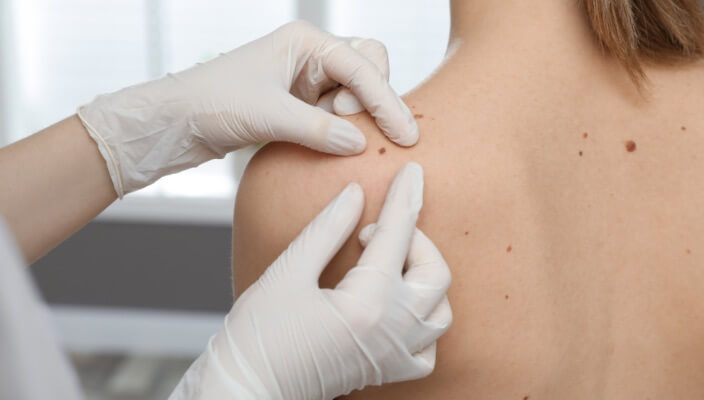
- Skin Cancer
- General Dermatology
- Skin Exams
Navigating the landscape of Total Body Skin Exams: Uncover the comprehensive process, understand why it matters for skin health, and gain insights into what to expect during these essential dermatological examinations.
Read More
- Skin Cancer
- Skin Exams
It’s time to face the facts: skin cancer can develop in individuals of all skin colors, including those with darker skin tones.
Read More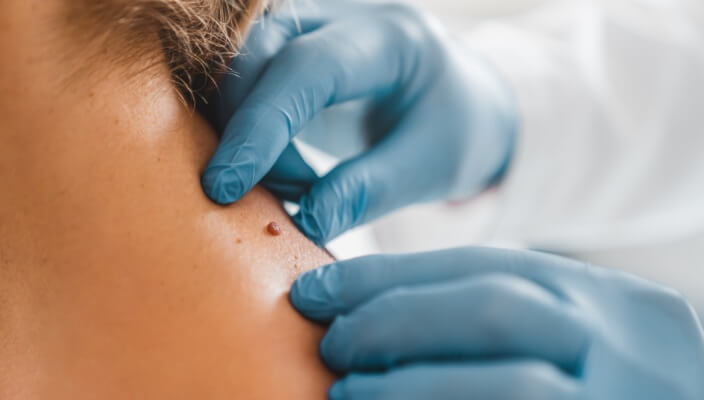
- Skin Cancer
- Skin Exams
In this blog, we’re covering what you need to know about five dangerous skin cancers, including basal cell carcinoma (BCC), squamous cell carcinoma (SCC), malignant melanoma, merkel cell carcinoma, and kaposi sarcoma.
Read MoreFeatured Products for Sun Protection
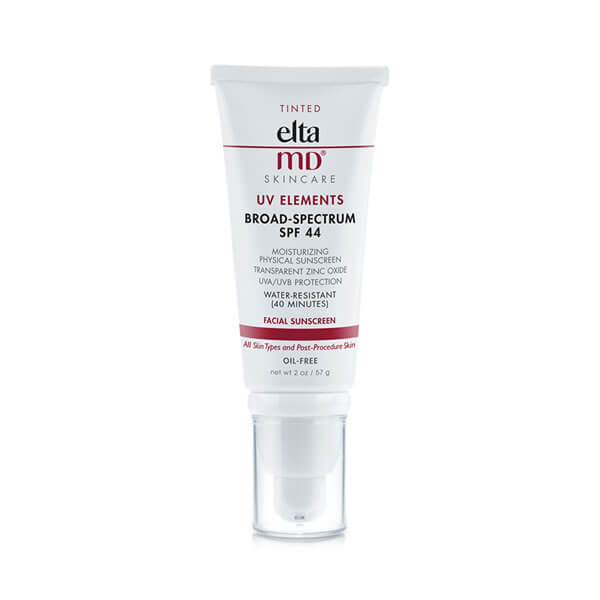
EltaMD UV Daily SPF 44 tinted
Serious UV protection and superior hydration join forces in this sheer facial sunscreen. EltaMD UV Daily has hyaluronic acid to boost moisture retention and diminish fine lines. This lightweight moisturizer with UV protection can be worn alone or under makeup. Choose from tinted and untinted formulas for use every day. 1.7 oz / 48 g
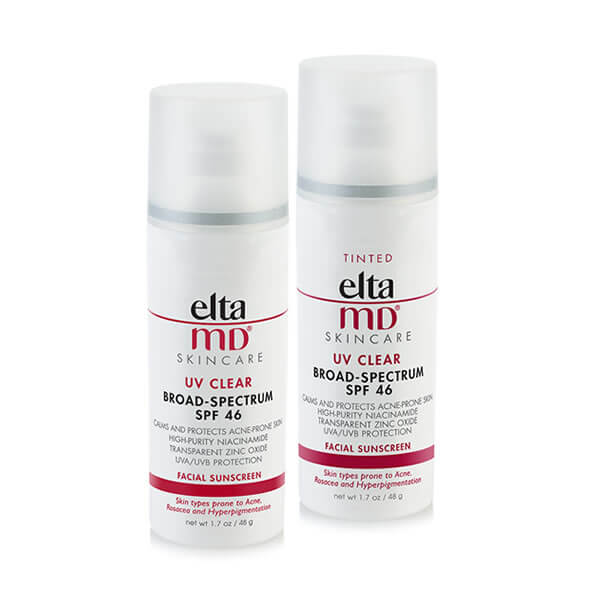
EltaMD UV Clear SPF 46
Oil-free EltaMD UV Clear helps calm and protect sensitive skin types prone to discoloration and breakouts associated to acne and rosacea. It contains niacinamide (vitamin B3), hyaluronic acid and lactic acid, ingredients that promote the appearance of healthy-looking skin. Very lightweight and silky, it may be worn with makeup or alone. Choose from tinted and untinted formulas for use every day. 1.7 oz / 48 g


